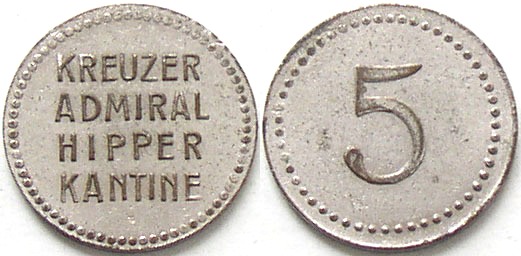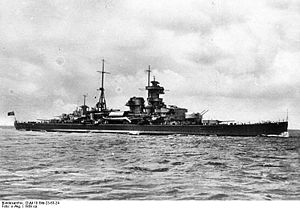Admiral Hipper saw a significant amount of action during the war. She led the assault on Trondheim during Operation Weserübung; while en route to her objective, she sank the British destroyer HMS Glowworm. In December 1940, she broke out into the Atlantic Ocean to operate against Allied merchant shipping, though this operation ended without significant success. In February 1941, Admiral Hipper sortied again, sinking several merchant vessels before eventually returning to Germany via the Denmark Strait. The ship was then transferred to northern Norway to participate in operations against convoys to the Soviet Union, culminating in the Battle of the Barents Sea on 31 December 1942, where she was damaged and forced to withdraw by the light cruisers HMS Sheffield and HMS Jamaica.
Enraged by the defeat at the battle, Adolf Hitler ordered the majority of the surface warships scrapped, though Admiral Karl Dönitz was able to convince Hitler to retain the surface fleet. As a result, Admiral Hipper was returned to Germany and decommissioned for repairs. The ship was never restored to operational status, however, and on 3 May 1945, Royal Air Force bombers severely damaged Admiral Hipper while she was in Kiel. Her crew scuttled the ship at her moorings, and in July 1945, she was raised and towed to Heikendorfer Bay. She was ultimately broken up for scrap in 1948–1952; her bell resides in the National Maritime Museum in Greenwich.

